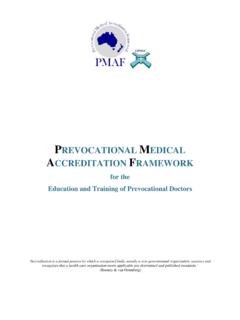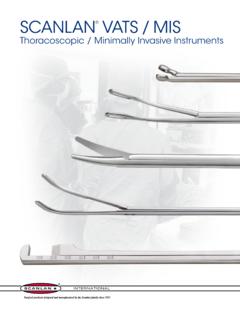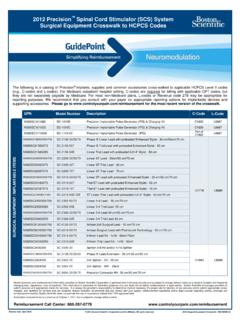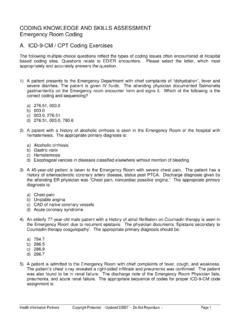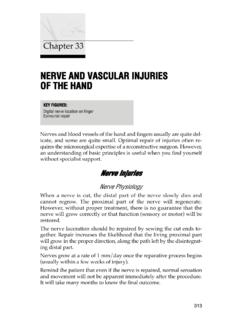Transcription of AUSTRALIAN CURRICULUM FRAMEWORK FOR …
1 Confederation of PostgraduateMedical Education CouncilsAUSTRALIANCURRICULUMFRAMEWORK FORJUNIOR DOCTORSSelf-directed learningIdentifies and addresses personal learning objectivesEstablishes and uses current evidence based resources to support own learningSeeks opportunities to reflect on and learn from clinical practiceSeeks and responds to feedback on learningParticipates in research and quality improvement activities where possibleTeachingPlans, develops and conducts teaching sessions for peers and juniorsUses varied approaches to teaching small and large groupsIncorporates teaching into clinical workEvaluates and responds to feedback on own teachingSupervisionProvides effective supervision by being available, offering an orientation, learning opportunities, and by being a role modelAdapts level of supervision to the learner s competence and confidenceAssessment and FeedbackProvides constructive, timely and specific feedback based on observation of performanceParticipates in feedback and assessment processesProvides constructive guidance or refers to an appropriate support to address problems (ADV) ManagementIntroductionCommunicationClini cal Problems and ConditionsSkills & ProceduresProfessionalismThe prevocational phase of medical training and development encompasses the period between graduation and vocational AUSTRALIAN CURRICULUM FRAMEWORK for junior doctors (ACF) is an educational template outlining the learning outcomes required of prevocational doctors , to be achieved through their clinical rotations, education programs and individual learning, in order to promote safe, quality health care.
2 The ACF is built around three learning areas: Clinical Management, Communication, and Professionalism. These areas are divided into categories each of which is further subdivided into learning topics. These topics have been identified in the literature and from supervisors experiences as being critical to both safe prevocational practice and a basis for future training. The principles that underpin the ACF include: Adult Learning theory, including: respect for prior learning and experience, provision of clear learning outcomes, regular feedback on performance and provision of opportunities for reflection A focus on translating learning from university into performance in the workplace Vertical integration of medical education across the continuum Clear expectations of outcomes for all involved in prevocational medical education and training Safety and quality in ACF is a continuing collaborative project between Postgraduate Medical Councils (PMCs) and a broad range of stakeholders under the leadership of the Confederation of Postgraduate Medical Education Councils (CPMEC) and funded by the AUSTRALIAN Government Department of Health and Ageing.
3 The history of the development of the ACF, references and useful downloads and links are available on the CPMEC website: the AFCThe ACF can be used in a variety of ways to support prevocational training and development:For Prevocational doctors The ACF can be used to guide your journey through the prevocational years. It outlines the desired learning outcomes, however it is recognised that proficiency in achievement of the capabilities will occur at different stages in your training but should ideally be achieved prior to vocational training. The ACF is designed to be used as a self-assessment tool to identify strengths, weaknesses and opportunities for learning and professional development. It can then be used as a basis for monitoring your progress during the prevocational years. When commencing new rotations, the ACF provides a useful guide for discussing the learning opportunities that may be available from a given term.
4 It may help to identify particular skills and procedures that may be learnt during the term and to plan in advance to receive such Supervisors, educators, employers and managers: The ACF can be used to review the learning opportunities offered by existing rotations or to plan the development of innovative positions in new and expanded settings. For example, clinical staff can use the ACF as a starting point for discussions about what doctors in vocational training should learn and how best to teach it. The ACF can be mapped to undergraduate and vocational training curricula, prevocational education programs, position descriptions and rosters in order to identify gaps or duplication across the continuum of medical education. Clinical unit staff can use the ACF as a starting point for discussions about innovative approaches to clinical teaching and professional development.
5 The ACF provides a structure for mid and end of term feedback and would like to acknowledge the following:The AUSTRALIAN Government Department of Health and Aging for their ongoing financial support of the ACF time and effort of the ACF Revision Working Group members including: Dr Greg Keogh Prof Brian Jolly Prof Fiona Lake Prof John Wilson Prof Richard Ruffin Ms Debbie Paltridge Dr Jag Singh Assoc Prof Merrilyn Walton Dr Alex Markwell Mr Jamie Alexander Dr Derinda Arangala Ms Susanne Le BoutillierDoctors should be able to appropriately assess patients presenting with common, important conditions, including the accurate identification of symptoms, signs and/or problems and their differential diagnosis and then use that information to further manage the patient, consistent with their level of responsibility. The assessment and management of these common conditions will vary depending on the setting in which they are Genetically determined conditionsFunctional decline or impairmentCognitive or physical disabilityDERMATOLOGICAL Skin conditions Skin malignanciesNEUROLOGICALLoss of consciousnessSeizure disordersSyncopeDeliriumFalls.
6 Especially in the elderlyHeadacheStroke / TIAS ubarachnoid haemorrhageSpinal diseaseMUSCULOSKELETAL Joint disordersCIRCULATORYH ypertensionHeart failureChest painCardiac arrhythmiasElectrolyte disturbancesIschaemic heart diseaseLeg ulcersLimb ischaemiaThromboembolytic diseaseRESPIRATORY BreathlessnessAsthmaCoughChronic Obstructive Pulmonary DiseasePneumonia / respiratory infectionUpper airway obstructionObstructive sleep apnoeaPleural diseasesORAL DISEASET oothacheOral InfectionsGASTROINTESTINALN ausea and VomitingAbdominal painGastrointestinal bleedingConstipationDiarrhoeaJaundiceLiv er diseaseRENAL / UROGYNAECOLOGICAL Dysuria &/or frequent micturitionPyelonephritis and UTIsReduced urinary outputRenal failureUrinary IncontinenceAbnormal menstruationContraceptionOBSTETRIC PainPain and bleeding in pregnancyENDOCRINE Diabetes: new cases & complicationsHAEMOPOIETICA naemiaNUTRITION / METABOLICW eight gainWeight lossMENTAL STATE Disturbed or aggressive patientPSYCHIATRIC / DRUG & ALCOHOLP sychosisDepression AnxietyDeliberate self-harmDementiaAddiction (smoking, alcohol, drug)
7 Substance abuseINFECTIOUS DISEASESNon-specific febrile illnessSepticaemiaSexually Transmitted InfectionsONCOLOGYN eoplasiaIMMUNOLOGY AnaphylaxisPHARMACOLOGY / TOXICOLOGYP oisoning EnvenomationCRITICAL CARE / EMERGENCYI njury preventionNon-accidental injuryMinor traumaMultiple traumaChild abuseDomestic violenceElder abusePostoperative careShockProfessionalismIntroductionClin ical Problems and ConditionsTEACHING, LEARNING & SUPERVISIONACKNOWLEDGEMENTSP rofessional DevelopmentExplores and is open to a variety of career optionsParticipates in a variety of continuing education opportunities Confederation of Postgraduate Medical Education Councils (CPMEC) 2009To reproduce this document written authorisation from the Confederation of Postgraduate Medical Education Councils is in difficultyIdentifies the support services availableRecognises the signs of a colleague in difficultyRefers appropriately & responds with empathyDoctors as leadersShows an ability to work well with and lead othersExhibits the qualities of a good leader and takes the leadership role when required (ADV) doctors should be able to provide safe treatment to patients through competently performing certain procedural and/or assessment skills (ADV = ADVANCED more likely to be learnt in PGY2 or above).
8 GENERALM easurement Blood pressure Pulse oximetry Interpretation of resultsPathologyRadiologyNuclear MedicineIntravenousVenepuncture Intravenous cannulation Intravenous infusion set up Intravenous drug administration Intravenous fluid & electrolyte therapy DiagnosticBlood Sugar Testing Blood cultureWound swabRespiratory Oxygen therapy Nebuliser/inhaler therapy Bag & Mask ventilationLMA and ETT placement (ADV)Therapeutics/ProphylaxisAnticoagula nt Antibiotic InsulinAnalgesiaBronchodilatorsSteroids GENERALI njectionsIntramuscular injections Subcutaneous injections Joint aspiration or injection (ADV) WOMEN S HEALTHP alpation of the pregnant abdomenFoetal heart sound detectionUrine pregnancy testing Speculum examinationDiagnosis of pregnancyEndocervical swab / PAP smear Gynaecological pelvic examination CHILD HEALTHI nfant respiratory distress assessment Infant/child dehydration assessmentApgar score estimation (ADV)Newborn examination Neonatal and Paediatric Resuscitation (ADV)SURGICALS crub, gown & glove Assisting in the operating theatreSurgical knots & simple wound suturing Local anaesthesiaSimple skin lesion excision Suture removalComplex wound suturing (ADV)EAR, NOSE & THROATT hroat swab Anterior rhinoscopyAnterior nasal pack insertion Auroscopy/otoscopyExternal auditory canal irrigation External auditory canal ear wick insertion (ADV)
9 Skills & ProceduresPROFESSIONAL BEHAVIOURCARDIOPULMONARY 12 lead electrocardiogram recording and interpretationArterial blood gas sampling and interpretationPeak flow measurement Spirometry Pleural effusion/pneumothorax aspiration Central venous line insertion (ADV) GASTROINTESTINAL Nasogastric tube insertion Rectal examination Anoscopy/proctoscopy (ADV) Abdominal paracentesis (ADV) NEUROLOGICAL Glasgow Coma Scale (GCS) scoringAssessment of Neck stiffnessFocal neurological sign identification Papilloedema identification (ADV)Lumbar puncture (ADV)MENTAL HEALTHMini-mental state examination Psychiatric Mental State ExaminationSuicide risk assessment Alcohol withdrawal scale useApplication of Mental Health ScheduleOPHTHALMICV isual field assessment Visual acuity assessmentDirect ophthalmoscopy Eye drop administrationEye bandage application Eye irrigationEyelid eversion Corneal foreign body removalIntraocular pressure estimation (ADV) Slit lamp examination (ADV)UROGENITALB ladder catheterisation (M&F) Urine dipstick interpretationBladder ScanUrethral swabTRAUMAP rimary trauma survey In-line immobilisation of cervical spineCervical collar application Pressure haemostasisVolume resuscitation Peripheral neurovascular assessmentPlaster cast/splint limb immobilisation Joint relocationSecondary trauma survey (ADV)Intercostal catheter insertion (ADV)
10 Skills & ProceduresClinical ManagementSystemsWorks in ways which acknowledge the complex interaction between the healthcare environment, doctor & patientUses mechanisms that minimise error checklists, clinical pathwaysParticipates in continuous quality improvement clinical auditRisk & preventionIdentifies the main sources of error & risk in the workplaceRecognises and acts on personal factors which may contribute to patient and staff risk Explains and reports potential risks to patients & staffAdverse events & near missesDescribes examples of the harm caused by errors & system failuresDocuments & reports adverse events in accordance with local incident reporting systemsRecognises & manages adverse events & near misses (ADV)Public healthInforms authorities of each case of a 'notifiable disease'Acts in accordance with the management plan for a disease outbreak Identifies the determinants of the key health issues and opportunities for disease prevention in the community (ADV)Infection controlPractices correct hand-washing and aseptic techniquesUses methods to minimise transmission of infection between patientsRationally prescribes antibiotic/antiviral therapy for common conditionsRadiation safetyMinimise the risk to patient or self associated with exposure to radiological investigations or proceduresRationally requests radiological investigations and proceduresRegularly evaluates his/her ordering of radiological investigations and procedures (ADV)

